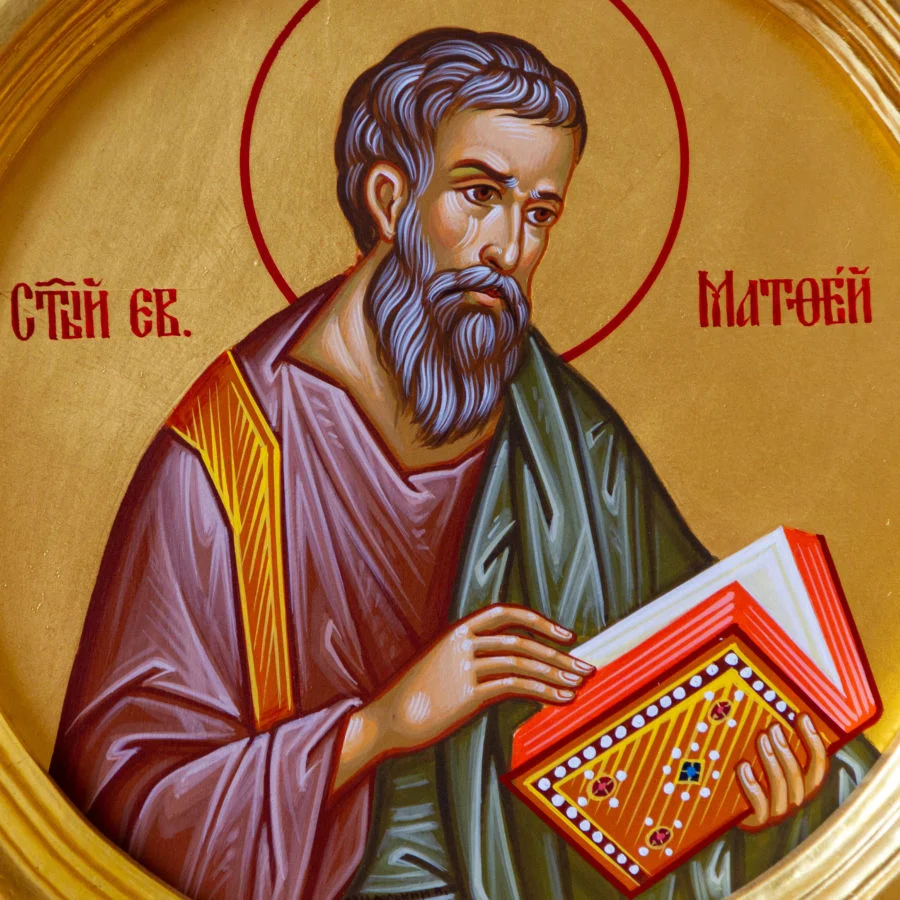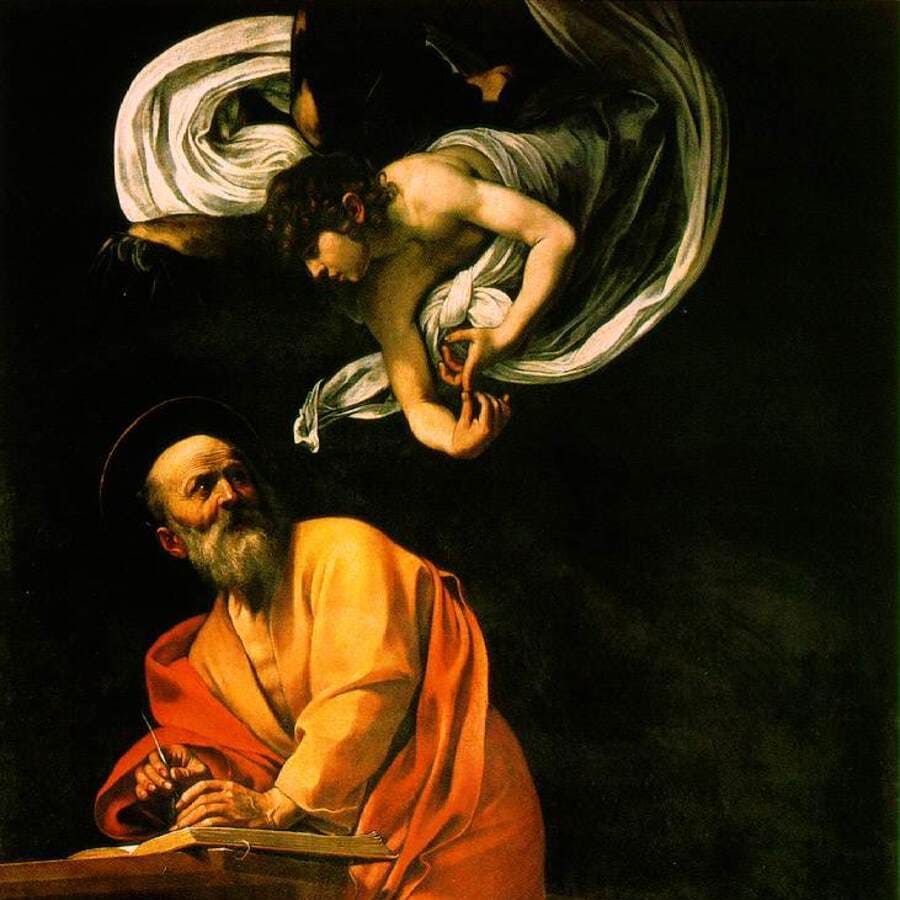Matthew’s Gospel is often noted for its focus on Jesus as the fulfillment of Old Testament prophecies, emphasizing His role as the Messiah and King. It opens with a genealogy of Jesus, linking Him to key figures in Jewish history, including Abraham and King David.
Key themes include:
- The Kingdom of Heaven: Matthew frequently refers to the “Kingdom of Heaven,” highlighting the reign of God and the coming of His Kingdom on Earth.
- Sermon on the Mount: This Gospel contains the famous Sermon on the Mount (Chapters 5-7), where Jesus teaches about morality, love, prayer, and the Beatitudes.
- The Great Commission: At the end of the Gospel (28:16-20), Jesus commissions His disciples to spread the Gospel to all nations, making disciples of all people.
Matthew's Gospel is often seen as bridging the Old and New Testaments, presenting Jesus as both the promised Messiah and the Savior for all people, Jew and Gentile alike.
„Overview of the Gospel of Matthew”
The Gospel of Matthew is the first book of the New Testament and one of the four canonical Gospels. Traditionally attributed to Matthew, a tax collector turned disciple of Jesus, this Gospel was likely written between AD 70–90, primarily for a Jewish-Christian audience. It emphasizes that Jesus is the Messiah, the fulfillment of Old Testament prophecies, and the true King of Israel.
Structure and Key Sections
1. The Genealogy and Birth of Jesus (Chapters 1–2)
- Jesus’ Genealogy (1:1-17): Traces Jesus' lineage from Abraham through David, proving He is the promised Messiah.
- The Birth of Jesus (1:18-25): The angel tells Joseph that Mary will give birth to the Son of God, fulfilling Isaiah’s prophecy.
- Visit of the Magi (2:1-12): Wise men from the East honor the newborn King.
- Flight to Egypt (2:13-23): Joseph takes Mary and Jesus to Egypt to escape King Herod’s massacre of infants.
2. The Beginning of Jesus’ Ministry (Chapters 3–4)
- John the Baptist’s Preaching (3:1-12): John calls for repentance and baptizes in preparation for the Messiah.
- Baptism of Jesus (3:13-17): Jesus is baptized, and the Spirit descends like a dove, affirming His divine Sonship.
- Temptation in the Wilderness (4:1-11): Jesus fasts for 40 days and resists the devil’s temptations.
- Jesus Begins Preaching (4:12-25): He calls His first disciples and starts proclaiming the Kingdom of Heaven.
3. The Sermon on the Mount (Chapters 5–7)
One of Jesus’ most famous teachings, presenting the ethics of the Kingdom of God.
- The Beatitudes (5:1-12): "Blessed are the poor in spirit..." – A roadmap to holiness and happiness.
- Salt and Light (5:13-16): Believers are called to be examples in the world.
- Fulfillment of the Law (5:17-20): Jesus perfects the Old Testament Law.
- Teachings on Anger, Lust, Divorce, and Oaths (5:21-37): Raising moral standards.
- Love Your Enemies (5:38-48): "Love your enemies and pray for those who persecute you."
- The Lord’s Prayer (6:9-13): "Our Father who art in heaven..."
- Warnings About Hypocrisy (6:1-18): True faith is about sincerity, not show.
- Trust in God (6:25-34): "Seek first the Kingdom of God."
- Judging Others and the Golden Rule (7:1-12): "Do to others what you would have them do to you."
- The Wise and Foolish Builders (7:24-27): Build your life on Christ’s teachings.
4. Jesus' Miracles and Authority (Chapters 8–10)
- Healings and Miracles (8:1–9:34): Jesus heals lepers, paralytics, and the blind, demonstrating divine power.
- The Calling of Matthew (9:9-13): "I desire mercy, not sacrifice."
- Sending of the Twelve Apostles (10:1-42): Jesus commissions His disciples to preach.
5. Jesus’ Teachings and Parables (Chapters 11–13)
- John the Baptist’s Question (11:2-19): Jesus affirms John’s role in salvation history.
- Come to Me and Rest (11:28-30): "Come to me, all who are weary..."
- The Sabbath Controversy (12:1-14): Jesus is "Lord of the Sabbath."
- The Kingdom Parables (Chapter 13):
- The Sower (13:1-23) – Different responses to God’s word.
- The Mustard Seed (13:31-32) – The Kingdom starts small but grows.
- The Hidden Treasure (13:44) – The Kingdom is worth everything.
6. The Growing Opposition (Chapters 14–18)
- John the Baptist’s Death (14:1-12) – He is martyred by Herod.
- Feeding of the 5,000 (14:13-21) – Jesus multiplies food.
- Peter’s Confession (16:13-20) – "You are the Christ, the Son of the living God."
- Jesus Predicts His Death (16:21-28) – He prepares His disciples for the cross.
- The Transfiguration (17:1-13) – Jesus appears in glory with Moses and Elijah.
- Teaching on Humility and Forgiveness (Chapter 18):
- The Parable of the Lost Sheep (18:12-14) – God seeks the lost.
- The Unforgiving Servant (18:21-35) – We must forgive as we are forgiven.
7. The Journey to Jerusalem (Chapters 19–25)
- Teaching on Marriage and Wealth (19:1-30) – The rich young man.
- Triumphal Entry (21:1-11) – Jesus enters Jerusalem as King.
- Cleansing of the Temple (21:12-17) – "My house shall be called a house of prayer."
- Debates with Religious Leaders (22:15-46) – Jesus answers their traps.
- The Greatest Commandment (22:36-40): "Love God and your neighbor."
- Warnings Against Hypocrisy (23:1-36) – Jesus condemns religious pride.
- The End Times (24:1-51) – The signs of Jesus’ second coming.
- Parables of the Last Judgment (25:1-46):
- The Wise and Foolish Virgins (25:1-13) – Be prepared for Christ’s return.
- The Parable of the Talents (25:14-30) – Use your gifts for God.
- The Sheep and the Goats (25:31-46) – Judgment based on love for others.
8. The Passion, Death, and Resurrection of Jesus (Chapters 26–28)
- The Last Supper (26:17-30): Jesus institutes the Eucharist.
- Jesus’ Arrest and Trial (26:36–27:26): Judas betrays Him, and Peter denies Him.
- Crucifixion (27:27-56): "My God, my God, why have You forsaken me?"
- Burial and the Guard at the Tomb (27:57-66): Roman soldiers secure the tomb.
- The Resurrection (28:1-10): "He is not here; He is risen!"
- The Great Commission (28:16-20): "Go and make disciples of all nations."
إنجيل القدّيس متّى
Évangile de Saint Matthieu


